Search results for: 'For'
-
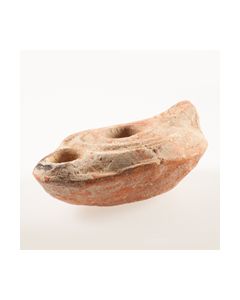 Byzantinische Öllampe - seltene Form
Byzantinische Öllampe - seltene FormHenkel mit Kornähre dekoriert. Stilisiertes Radsymbol in Standfläche. Exzellent erhalten, mit Rußspuren.
Price: on request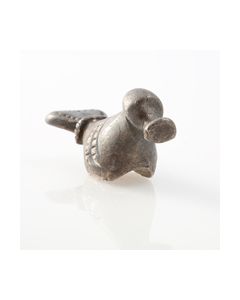 Applike aus Silber, Form eines Vogels
Applike aus Silber, Form eines VogelsMuseales zoomorphes Ornament für Haarschmuck, Pyxis oder Möbelstücke aus spätrömischer bis frühbyzantinsicher Zeit.
Price: on request Applike aus Silber, Form eines Vogels
Applike aus Silber, Form eines VogelsKunstvolles zoomorphes Ornament für Haarschmuck, Pyxis oder Möbelstücke aus spätrömischer bis frühbyzantinsicher Zeit.
Price: on request Applike aus Silber, Form eines Vogels
Applike aus Silber, Form eines VogelsKunstvolles zoomorphes Ornament für Haarschmuck, Pyxis oder Möbelstücke aus spätrömischer bis frühbyzantinsicher Zeit.
Price: on request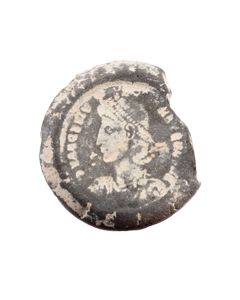 Gussform eines antiken Münzfälschers
Gussform eines antiken MünzfälschersFund aus Ausgrabung einer antiken Fälscherwerkstatt in Ägypten, 333 n. Chr. bis 350 n. Chr., Vorlage für Follis des Constans. Historisch hochinteressantes Objekt.
Price: on request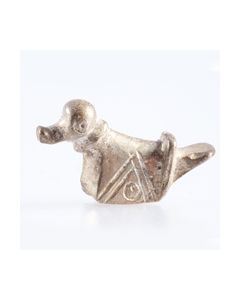 Applike aus Silber, Form eines Vogels
Applike aus Silber, Form eines VogelsKunstvolles zoomorphes Ornament für Möbelstücke eines reichen Haushalts aus spätrömischer bis frühbyzantinsicher Zeit.
Price: on request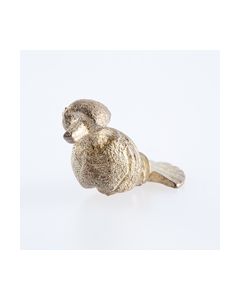 Applike aus Silber, Form eines Vogels
Applike aus Silber, Form eines VogelsKunstvolles zoomorphes Ornament für Möbelstücke eines reichen Haushalts aus spätrömischer bis frühbyzantinsicher Zeit.
Price: on request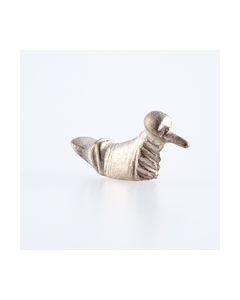 Applike aus Silber, Form eines Vogels
Applike aus Silber, Form eines VogelsKunstvolles zoomorphes Ornament für Möbelstücke eines reichen Haushalts aus spätrömischer bis frühbyzantinsicher Zeit.
Price: on request Samaritanische Öllampe, elegante Form
Samaritanische Öllampe, elegante FormInteressanter Typ von Öllampe, vermutlich aus früher samaritanischer Zeit. Farbreste in dem Dekor. 4. bis 6. Jh. n.Chr., 95x56mm, 34mm hoch.
Price: on request Egyptian frog lamp from very old German collection
Egyptian frog lamp from very old German collectionThe frog lamps developed in Egypt close to Abydos. For the Egyptians, the frog symbolized birth and resurrection, this symbolism was also adapted by the early Christians. From the German collection Becker, in this for 3 generations.
Price: on request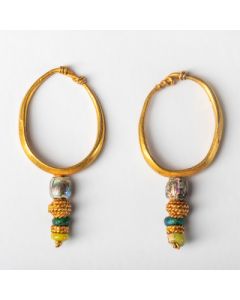 Pair of ancient gold earrings
Pair of ancient gold earringsA magnificently preserved piece of jewellery from the Late Roman to Early Byzantine era. Featuring glass and gold beads.
€2,400 Glass double unguentarium
Glass double unguentariumImpressive cosmetic vessel with large handle and nice spiral trailing decoration. A Palestinian type from the Late Roman or Early Byzantine period.
€1,375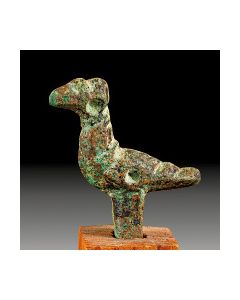 Bronze bird from Late Antiquity
Bronze bird from Late AntiquityFinial in the shape of a bird, probably once the head of a rod or distaff. From the Late Roman or Early Byzantine period.
Price: on request Early Byzantine censer
Early Byzantine censerSmall bronze pot with a bulbous body an high handle. It was probably used as an incense burner. From the collection of the historian Friedrich von Bassermann-Jordan (1872-1959).
Price: on request Pair of early Byzantine gold earrings
Pair of early Byzantine gold earringsBeautiful jewellery with beads made of emerald and garnet. Made in the eastern part of the Mediterranean during the 6th to early 7th century.
Price: on request Byzantine bronze processional cross holder
Byzantine bronze processional cross holderExcellent condition, beautiful patina, worth the exhibition in a museum. Middle Byzantine Period, Constantinople or Asia Minor workshop.
€4,930 Late Roman glass flask
Late Roman glass flaskFlat bottle with double handle from the Eastern Mediterranean. Made between the 3rd and 6th century.
Price: on request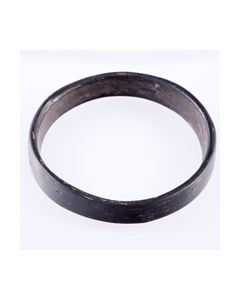 Antiker Armreif aus dunklem Glas
Antiker Armreif aus dunklem GlasRömischer bis byzantinsicher Armreif aus Glas. Nahtlos gefertigt. Dunkles Glas in schlichter Bandform. Hervorragender Zustand.
Price: on request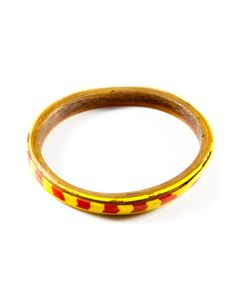 Antiker Glasarmreif mit polychromer Verzierung
Antiker Glasarmreif mit polychromer VerzierungRömischer bis byzantinsicher Armreif aus Glas. Nahtlos gefertigt. An der Außenseite polychrome Verzierungen aus Glaspaste.
Price: on request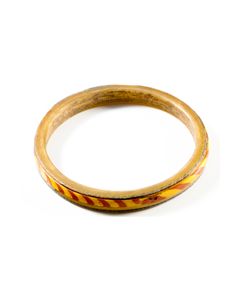 Antiker Glasarmreif mit polychromer Verzierung
Antiker Glasarmreif mit polychromer VerzierungRömischer bis byzantinsicher Armreif aus Glas. Nahtlos gefertigt. An der Außenseite polychrome Verzierungen aus Glaspaste.
Price: on request Ancient gold ring
Ancient gold ringMinimalistic circular finger ring made of nicely twisted gold wire.
Price: on request Glass bottle with nub decoration
Glass bottle with nub decorationThe pear-shaped glass comes from the late Roman or early Byzantine period. Presumably from the Eastern Roman province of Palaestina.
Price: on request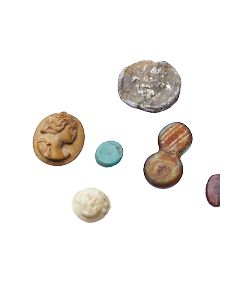 Six ancient artefacts and one modern cast
Six ancient artefacts and one modern castInteresting group of objects from the Professor Brosch collection of ancient gems. It has two intaglios, one cameo, two glass decorations, a lead bulla and a modern cast of a quality ancient gem.
Price: on request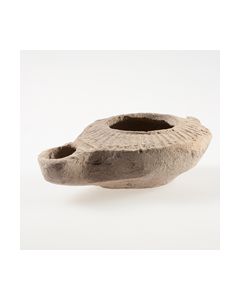 Late-Roman Levantine oil lamp
Late-Roman Levantine oil lampRunde Öllampe mit leicht herausgezogener Nase, diese ist leicht eckig geformt. Hellbrauner Ton mit weitgehend erhaltenem dunklem Überzug und Fundpatina.
€88 Öllampe aus der Levanteregion mit Tatzenkreuz
Öllampe aus der Levanteregion mit TatzenkreuzDoppelkonische Öllampe mit Zapfengriff und einer für diesen Typ sehr ungewöhnlich geformten, stark vom Körper abgesetzten Nase.
Price: on request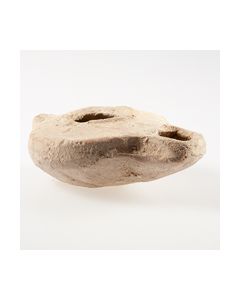 Late-Roman Levantine oil lamp
Late-Roman Levantine oil lampRunde Öllampe mit interessanter, eckig geformter Nase. 6. - 8. Jh. n. Chr. Museale Erhaltung, unbeschädigt, nicht restauriert.
€75 Byzantine glass pendant from Judaea
Byzantine glass pendant from JudaeaThe pendant with two portrait busts was worn as a lucky charm or protective amulet. Made in the early Byzantine period in a glass workshop in Judaea.
Price: on request Byzantine glass pendant from Judaea
Byzantine glass pendant from JudaeaThe pendant with a lion and crescent motif was worn as a lucky charm or protective amulet. Made in the early Byzantine period in a glass workshop in Judaea.
Price: on request Byzantine glass pendant from Judaea
Byzantine glass pendant from JudaeaThe pendant with an ibex motif was worn as a lucky charm or protective amulet. Made in the early Byzantine period in a glass workshop in Judaea.
€185 Byzantine glass pendant from Judaea
Byzantine glass pendant from JudaeaThe pendant shows Romulus and Remus being suckled by a she-wolf. It was worn as a lucky charm or protective amulet. Made in the early Byzantine period in a glass workshop in Judaea.
Price: on request Eastern Roman glass bottle with thread decoration
Eastern Roman glass bottle with thread decorationA product from the Roman province of Palaestina. The high-quality glass was created in the 6th to early 7th centuries, when the Eastern Roman Empire was thriving and the Byzantine Empire took shape.
€2,300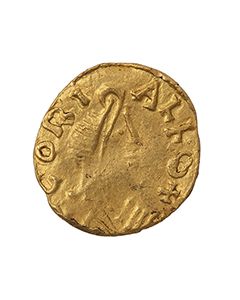 Very rare Merovingian gold tremissis in perfect condition with known finding location
Very rare Merovingian gold tremissis in perfect condition with known finding locationSo-called "Mint and Moneyer" series, moneyer: Rignicharius.Found 2021 in Horncastle, UK.
€4,400 Byzantine glass pendant from Judaea
Byzantine glass pendant from JudaeaThe pendant with a cock and lion motif was worn as a lucky charm or protective amulet. Made in the early Byzantine period in a glass workshop in Judaea.
Price: on request Clay impressions of Roman seals
Clay impressions of Roman sealsThe ancient impressions in clay are from papyrus documents issued and sealed in Roman times. A fantastic testimonial to Roman bureaucracy.
Price: on request

